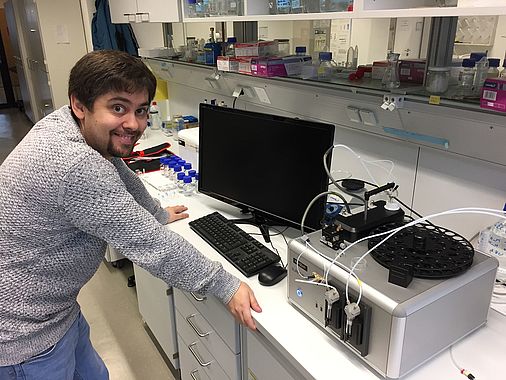
transport across membranes
SURFE2R N1 SURFE2R N1 - installation Dec. 2016, Dr. A Bazzone nan]I[on

Solid Supported Membrane Electrophysiology (SSM) is a technique that combines the benefits of solid-state sensors and membrane electrophysiology to investigate ion channels and membrane proteins. This method involves the formation of a lipid bilayer on a solid support, creating an artificial membrane that mimics the biological membrane.
SSM enables the direct measurement of ion channel activity, including ion flux and transport, by monitoring changes in electrical current across the lipid bilayer. The solid support, often made of insulating materials, provides stability and facilitates the integration of sensitive electronic components for accurate measurements.
This technique offers several advantages over traditional electrophysiology methods. It allows for precise control of the lipid composition, enabling the study of specific ions or molecules and their interactions with membrane proteins. SSM also allows for the investigation of membrane proteins in their native or purified forms, facilitating detailed studies of their structure-function relationship.
Furthermore, SSM is a versatile technique that can be applied to various experimental setups, including planar lipid bilayers and microelectrode arrays. It is widely used in research areas such as neuroscience, pharmacology, and drug discovery, providing valuable insights into the function and modulation of ion channels and membrane proteins.
